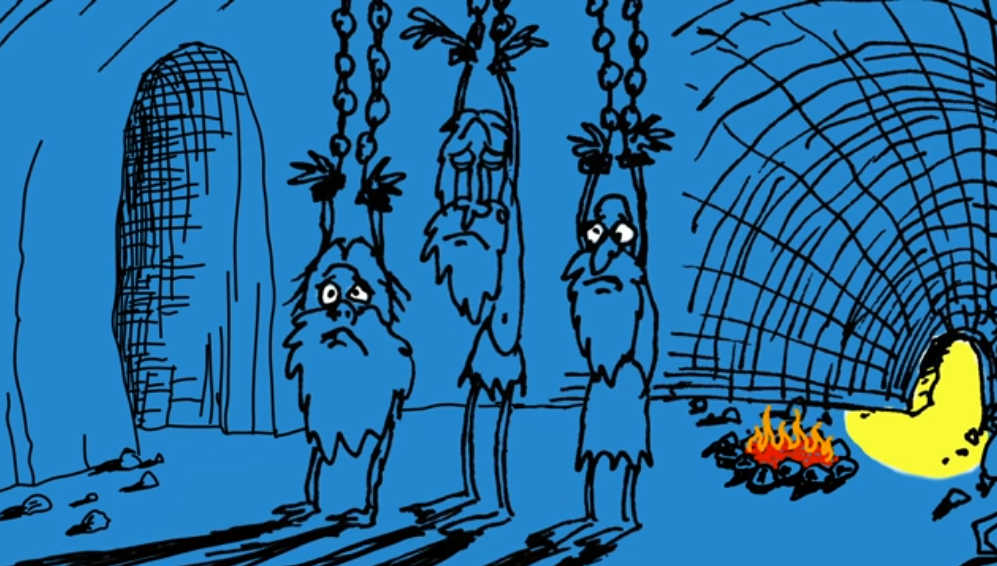Allegory: Difference between revisions
Fractalguy (talk | contribs) mNo edit summary |
Fractalguy (talk | contribs) mNo edit summary |
||
| Line 1: | Line 1: | ||
The term [ | [[File:Allegory-plato-cave-metaphor-scripture-literalism-interpretation.png|thumb|Plato's Allegory of the Cave]] | ||
The term [[wikipedia:Allegory|Allegory]] is chosen to describe the relationship between [[religious]] [[scripture]] and the natural [[universe]] because it implies the intent on the part of the author to describe one thing (the [[universe]] and human [[morality]]) by telling a story a story about another thing ([[god]]). | |||
It is more generally inclusive than [https://en.wikipedia.org/wiki/Metaphor Metaphor], so this wiki will not typically distinguish between them to avoid redundant links. | It is more generally inclusive than [https://en.wikipedia.org/wiki/Metaphor Metaphor], so this wiki will not typically distinguish between them to avoid redundant links. | ||
Revision as of 09:00, 25 January 2024

The term Allegory is chosen to describe the relationship between religious scripture and the natural universe because it implies the intent on the part of the author to describe one thing (the universe and human morality) by telling a story a story about another thing (god).
It is more generally inclusive than Metaphor, so this wiki will not typically distinguish between them to avoid redundant links.
Interpreting scripture as allegory is the alternative to literalism.
Mapping Metaphors
One of the goals of the metaculture wiki is to provide a "mapping" between common religious beliefs and sayings with their real-world analogs. This helps reinforce the truth behind these beliefs, while moving them from faith to certainty in the mind of the believer by providing the scientific evidence behind them.
Some examples are:
Allegory Videos